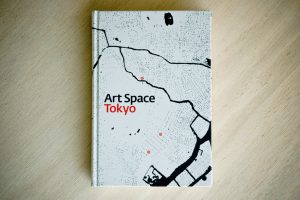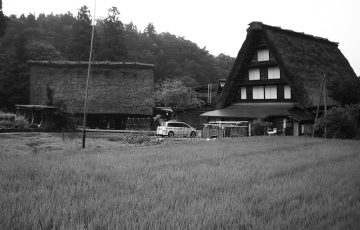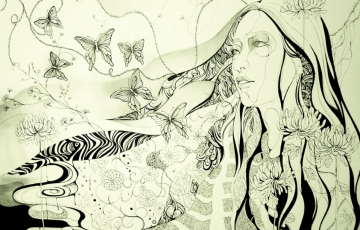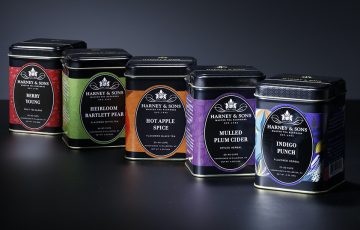Writing an article about Craig Mod is quite a challenge, considering how deliberate and careful he is with the content he produces. His homepage stands out from other blogs with beautiful typography, pro-quality photos, and elegant prose composed during retreats into the mountains. Currently a self-employed designer, developer, and publisher, his latest project saw him raise money to reprint a book he co-authored and designed, with plans in the works to develop an iPad application. An examination of Craig’s writings and projects provide a wealth of insight into not only the changing form of the book but also the rapidly evolving publishing industry.
Bridging East and West
 Craig came to Japan on a study abroad program when he was 19, and he would eventually return to Tokyo after graduating from University, intent on polishing his language skills and working in publishing. He confesses to a fascination with Asian design:
Craig came to Japan on a study abroad program when he was 19, and he would eventually return to Tokyo after graduating from University, intent on polishing his language skills and working in publishing. He confesses to a fascination with Asian design:
“I fall in love with street fashion every time I visit Hong Kong. And I love product design in Japan. I think Japan has always done, and continues to do, some of the best product design in the world. There’s a reason Muji goods are so freakishly coveted around the world,” Mod says in an interview with J Select.
“I also love Japanese space design for small living environments; their use of materials and light,” he adds.
“Despite seeing a lot of prefab disposable junk popping up all over the country, I can’t help but think there’s still an element of (Junichiro) Tanizaki’s beautiful shadows at play for bigger budget projects,” he says, referring to the essay In Praise of Shadows by the Taisho Period author. “I would, however, like to see a return to more innovative use of shoji and tatami in contemporary design. They’re some of my favorite materials.”
His language skills have progressed too, allowing him to function as a bridge between cultures, regularly working with people in Japanese publishing and media. “There’s hardly a day that goes by without me firing off several Japanese e-mails” he says. He has also lectured in Japanese, and he makes Japanese translations of his essays available on his website.
Fusing Data and Design
 Mod’s multidisciplinary knowledge makes him a fascinating hybrid. He began programming when he was nine, and during his teenage years he ran a number of BBSs (bulletin board sites), spending much of his time tweaking designs in an effort to make them look better. During these formative years, he also developed a passion for visual arts and animation, particularly after seeing the famous Japanese anime Akira.
Mod’s multidisciplinary knowledge makes him a fascinating hybrid. He began programming when he was nine, and during his teenage years he ran a number of BBSs (bulletin board sites), spending much of his time tweaking designs in an effort to make them look better. During these formative years, he also developed a passion for visual arts and animation, particularly after seeing the famous Japanese anime Akira.
“By the time I got to University I already had quite the multidisciplinary, self-taught skill set,” he explains. “I graduated from the Digital Media Design program at (University of Pennsylvania) , which fuses Fine Arts and Computer Science. It’s technically an engineering degree but I basically lived in the basement of the Fine Arts building (in the dark room).” He describes working in the two disciplines as a continuous balancing act, but clearly it’s one that he loves.
His projects Everymoment Now and Buzztracker are both clever fusions of design sense and programming know-how, as they collect data about popular news stores on the net and then present slick visual insights and patterns into the nature of that information. He is also a co-founder of TPUTH, a clever online magazine that filters and presents socially curated technology and design news underneath a throwback Russian Pravda aesthetic. In addition to those, Craig was also behind Hitotoki, a website that uses geo-data to map short ‘life moments’ from all over the globe.
[graphic here? perhaps something like this could make up for the lack of a great picture of craig mod]
While most designers and developers often work independent of each other, he holds an advantage having a such a deep understanding of both disciplines:
“In terms of innovating, you absolutely have to be multidisciplinary. Innovation happens at the fringes of disciplines. The web has brought the disciplines of programming, design and journalism so close to one another that if you only understand one, you probably won’t be able to intuit connections that lead to leaps in ideas.”
In a world where most media organizations are compartmentalized, with writers, designers, and programmers working on separate parts of the same product, Mod’s wider and more comprehensive understanding of the whole has helped him envision possibilities in publishing.
Books vs Binary
 When asked about similar multidisciplinary media-types whom he admires, Craig points to Marcos Weskamp who is one of the brains behind Flipboard, a ‘social magazine’ for the iPad that gathers content that your online friends have recommended and repackages it in an e-magazine format. Flipboard, he explains, is a great example of why a media organization might consider taking their time jumping on the iPad bandwagon:
When asked about similar multidisciplinary media-types whom he admires, Craig points to Marcos Weskamp who is one of the brains behind Flipboard, a ‘social magazine’ for the iPad that gathers content that your online friends have recommended and repackages it in an e-magazine format. Flipboard, he explains, is a great example of why a media organization might consider taking their time jumping on the iPad bandwagon:
“Instead of rush rush rushing, they were able to see the mistakes of first movers and their public version has been very, very well received. Everyone is like, ‘Wow, this is the first iPad app that’s really impressed me!’ And it’s like — well, that’s what happens when you’re thoughtful and purposeful and think in longer, more sustainable brush strokes.”
Being so well-versed in both traditional and new media, Mod has emerged as an authority on design and publishing. In particular, his essay ‘Books in the age of the iPad’ was lauded by the New York Times as “a thoughtful and distinctive perspective on the move of books from paper to interactive devices.” In the article he says ‘good riddance’ to throwaway print; goodbye to the bestseller for the beach.
“Digital is where disposable printed things should live” he says, but he’s clear to point out that there is still a place for beautiful printed things. Craig expresses a deep respect for well-crafted books, regardless of whether they‘re physical or digital. While the form is in transition, he asserts that the basic rules remain the same. “Good typography is still good typography,” he says.
The Long and the Short of it
 In contrast to the recent trend towards short-form blog posts and even shorter tweets that hog the public eye of late, Craig thinks that long-form articles are on the way back:
In contrast to the recent trend towards short-form blog posts and even shorter tweets that hog the public eye of late, Craig thinks that long-form articles are on the way back:
“I think we’re seeing a renaissance of long form. The iPhone + instapaper has already increased the amount of long form journalism/essays/etc., I read 1000 fold. . . I think Twitter has been brilliant for freeing space in our minds to be more open to long form reading again.”
Craig started publishing his own long-form essays on his website, with a goal of producing at a rate of one per month. Quite often he will venture into the mountains to write if possible:
“I’m always looking for balance — stay in the city too long and [you] go mad,” he says. The resulting articles are “some of the most gratifying/satisfying work I’ve ever done.”
His thoughtful essays have increased his readership over time, as well as his legions of followers on Twitter. Ironically, Craig’s digital proficiency and his presence on Twitter have served him well in publishing paper books too. When Art Spaces Tokyo, a book that he co-authored and designed, wasn’t reprinted by its publisher (despite the initial run selling out) he turned to his online social network for help to get it printed again.
Using the fund raising web service KickStarter.com, he brought in $23,790 for the project, easily passing his original goal of $15,000. With a silkscreen cloth cover and illustrations by Japanese artist Nobumasa Takahashi, the book is “an intimate guide to Tokyo via it’s art spaces” and it illustrates the passion Craig still has for beautiful books.
Finding a Balance
Today the challenge faced by traditional newspapers, magazines, and publishers is to figure out how to transition into the digital age while making a profit. And with so much information available online for free, the winners might just be the ones who can balance function and form; information and design. And if you want to learn about balance, go talk to Craig Mod.
Access to Mod’s online work is available at craigmod.com.
His book Tokyo Art Spaces can be purchased from artspacetokyo.com.

Story by Rick Martin
From J SELECT Magazine, October 2010















Recent Comments